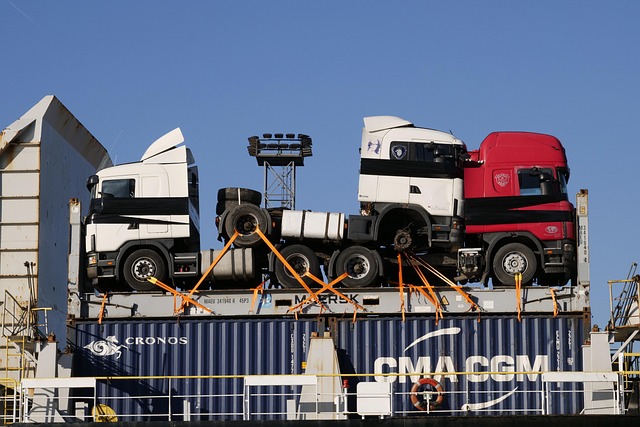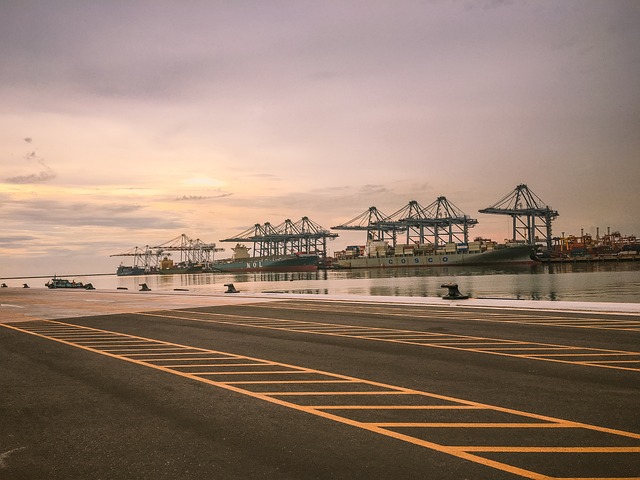Understanding standard shipping container dimensions (20ft, 40ft, high cube, reefer, flat rack) is crucial for efficient logistics. ISO specifications govern internal and external measurements, impacting load capacity and cargo accommodation. Height variations affect space utilization and loading safety. Precise measurements ensure optimal packing, minimize damage, and facilitate international trade through standardized compatibility. Adhering to global standards optimizes operations, enhances flexibility, and enables cost-effective supply chain management.
In the global logistics landscape, understanding shipping container dimensions is paramount for efficient and safe transportation. This article delves into the critical metric of shipping container dimensions—length, width, and height—exploring standard sizes, height variations’ impact on load capacity, precision measurement techniques, industry standards for regulatory compliance, and strategies to optimize space utilization in logistics. By understanding these key factors, businesses can navigate complex supply chains with confidence.
- Standard Sizes: Common Lengths and Widths
- Height Variations: Impact on Load Capacity
- Precision Measurement: Ensuring Safe Shipping
- Industry Standards: Regulatory Compliance
- Efficient Logistics: Optimizing Space Utilization
Standard Sizes: Common Lengths and Widths

In the world of international shipping, understanding standard shipping container dimensions is crucial for efficient logistics and transportation. The most common sizes include the 20ft and 40ft containers, each with distinct internal and external dimensions. A 20ft shipping container dimension typically stands at approximately 6.1m (20 feet) in length, 2.43m (8 feet) in width, and 2.59m (8.5 feet) in height, making it a popular choice for shorter routes or smaller cargoes. On the other hand, the 40ft shipping container dimensions offer more space, measuring around 12.19m (40 feet) in length, 2.43m (8 feet) in width, and 2.59m (8.5 feet) in height, allowing for bulkier or larger shipments.
These standard container dimensions are governed by ISO (International Organization for Standardization) specifications, ensuring uniformity across manufacturers and carriers worldwide. Beyond the basic sizes, various other shipping container types exist, such as high cube containers for extra headroom, reefer containers for temperature-controlled transport, flat rack containers for unusual cargoes, and modular or custom containers to suit specific needs. Each has its unique dimensions, which can range from narrow and wide variations to more specialized floor plans and ceiling heights, ensuring there’s a container to accommodate almost any shipping requirement.
Height Variations: Impact on Load Capacity

The height of a shipping container is a critical factor that significantly influences its load capacity and overall functionality. While standard containers adhere to set ISO dimensions, variations in height exist, primarily due to different types and configurations. For instance, a 20ft shipping container typically has an internal height of around 2.35 metres (7.7 feet), while a 40ft container offers a slightly taller interior, approximately 2.62 metres (8.6 feet). These differences may seem minimal, but they can have a substantial impact on how much cargo can be loaded and secured safely.
High cube containers, designed for increased internal volume, exhibit varying heights as well. A 20ft high cube container usually stands at 2.74 metres (9 feet), whereas the 40ft variant is roughly 2.87 metres (9.45 feet) tall. Custom or modular containers can also have unique height specifications based on specific load requirements. Understanding these dimension variations is essential for shippers and logisticians to ensure optimal utilization of space, select the right container type for their needs, and maintain cargo safety during transit.
Precision Measurement: Ensuring Safe Shipping

Precision measurement plays a pivotal role in ensuring safe and efficient shipping using metric shipping container dimensions. Shipping containers come in various sizes, such as the 20ft shipping container dimensions, 40ft shipping container dimensions, high cube containers, and more specialized options like reefer containers and flat rack containers. Each type has its unique internal dimensions, door opening sizes, and overall footprint, which must be accurately known to avoid damage during transport.
Shipping container internal dimensions, including floor space, ceiling height, and overall volume, are crucial for optimizing cargo loading and ensuring items arrive intact. ISO container dimensions and metric shipping container dimensions provide standardized measurements that facilitate global trade by facilitating compatibility across different countries’ shipping standards. Maintaining strict control over dimension tolerances is vital to guarantee containers fit through tight spaces on ships, trains, and cranes, preventing potential hazards at every stage of the supply chain.
Industry Standards: Regulatory Compliance

In the world of international trade and logistics, industry standards and regulatory compliance are paramount to ensure smooth operations and safety. When it comes to shipping containers, accurate dimensions are crucial for efficient handling, storage, and transportation. Regulatory bodies and industry organizations have established standard container dimensions, such as ISO (International Organization for Standardization) specifications, to facilitate global trade. These standards cover various types of containers, including the popular 20ft and 40ft shipping container dimensions, each with precise external and internal measurements.
For instance, a 20ft shipping container has specific length, width, and height metrics—typically around 6.06m (20 feet) long, 2.44m wide, and 2.59m high—while the larger 40ft container dimensions measure approximately 12.19m in length, 2.44m in width, and 2.67m in height. These dimensions are not just about overall size; they also dictate internal shipping container floor dimensions, door opening sizes, ceiling heights, and even the space available for stacking or customizing containers for specific cargo needs, such as reefer containers for perishable goods or flat rack containers for oversized items. Understanding these metric shipping container dimensions is essential for shippers, carriers, and logistics managers to ensure compliance, optimize space utilization, and provide accurate quotes for their services.
Efficient Logistics: Optimizing Space Utilization

Efficient logistics hinges on optimizing space utilization within shipping containers. Understanding and adhering to precise shipping container dimensions is paramount in this process. Standardized sizes like 20ft, 40ft, and high cube variants offer logistical advantages through efficient packing and streamlined operations. The internal dimensions of these containers, including floor space, ceiling height, and door opening dimensions, play a crucial role in maximizing cargo capacity.
This precision extends to external dimensions as well, ensuring compatibility with shipping and storage infrastructure. Moreover, various container types like reefer, flat rack, open top, and modular containers cater to specialized shipping needs, further enhancing logistical flexibility. Referring to comprehensive shipping container size charts and dimension guides allows businesses to make informed decisions, ultimately leading to cost savings and improved supply chain management.
Understanding the precise metric shipping container dimensions is paramount for efficient logistics, regulatory compliance, and safe shipping. By adhering to standard sizes and considering height variations, shippers can optimize space utilization while ensuring their loads meet industry standards. Accurate measurements are key to navigating the bustling global shipping landscape, fostering seamless transportation, and avoiding potential safety hazards.
